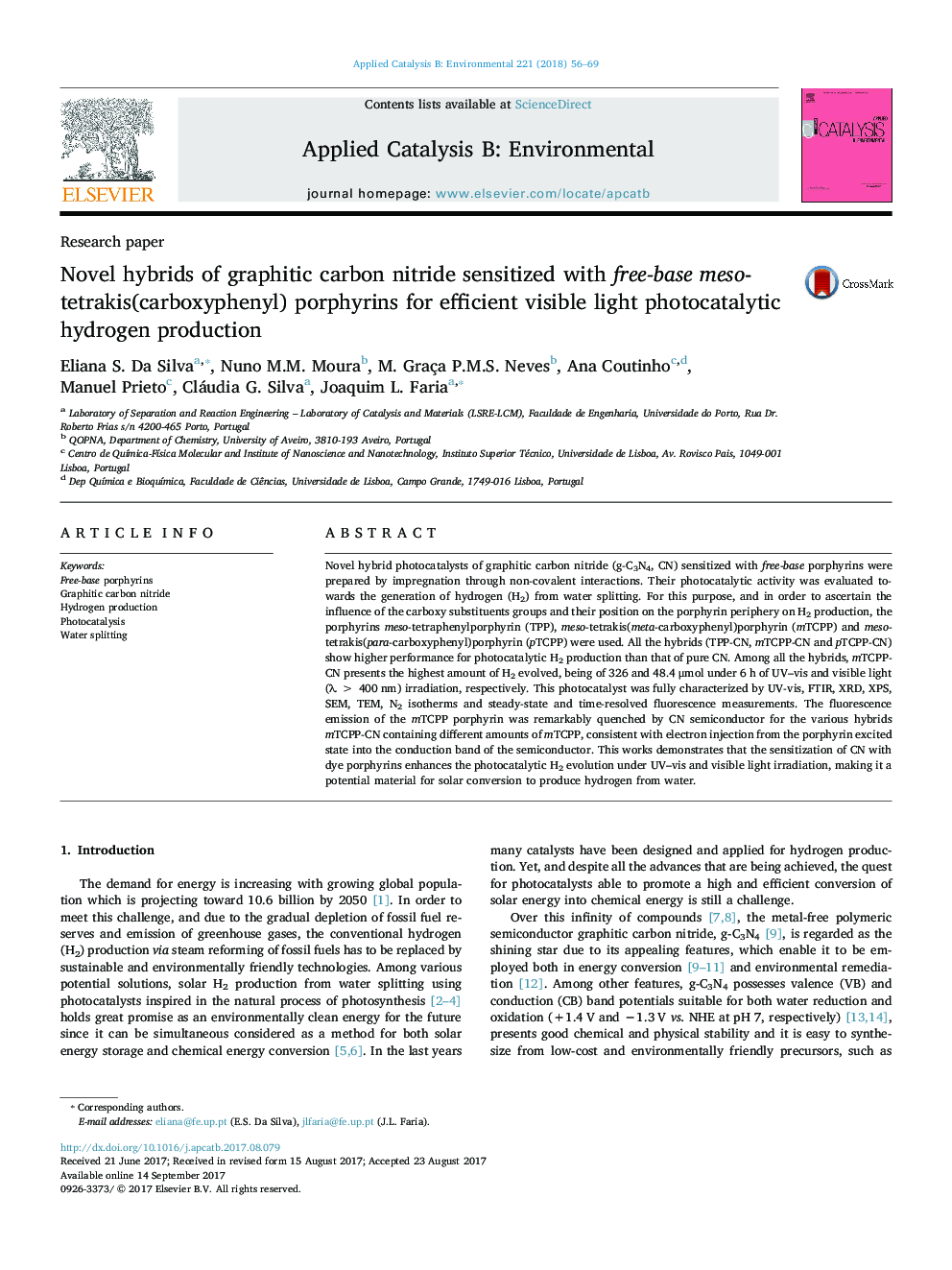| کد مقاله | کد نشریه | سال انتشار | مقاله انگلیسی | نسخه تمام متن |
|---|---|---|---|---|
| 6453393 | 1418799 | 2018 | 14 صفحه PDF | دانلود رایگان |
- Novel hybrids of g-C3N4/free-base meso-tetrakis(carboxyphenyl) porphyrins were prepared.
- The sensitization of g-C3N4 with the porphyrins greatly improves charge carrier separation, enhancing the photocatalytic activity.
- The chemical structure of the porphyrins and the porphyrin/g-C3N4 ratio strongly influences the catalytic activity.
- A mechanism of H2 generation involving electron transfer from the porphyrin to g-C3N4 is proposed.
Novel hybrid photocatalysts of graphitic carbon nitride (g-C3N4, CN) sensitized with free-base porphyrins were prepared by impregnation through non-covalent interactions. Their photocatalytic activity was evaluated towards the generation of hydrogen (H2) from water splitting. For this purpose, and in order to ascertain the influence of the carboxy substituents groups and their position on the porphyrin periphery on H2 production, the porphyrins meso-tetraphenylporphyrin (TPP), meso-tetrakis(meta-carboxyphenyl)porphyrin (mTCPP) and meso-tetrakis(para-carboxyphenyl)porphyrin (pTCPP) were used. All the hybrids (TPP-CN, mTCPP-CN and pTCPP-CN) show higher performance for photocatalytic H2 production than that of pure CN. Among all the hybrids, mTCPP-CN presents the highest amount of H2 evolved, being of 326 and 48.4 μmol under 6 h of UV-vis and visible light (λ > 400 nm) irradiation, respectively. This photocatalyst was fully characterized by UV-vis, FTIR, XRD, XPS, SEM, TEM, N2 isotherms and steady-state and time-resolved fluorescence measurements. The fluorescence emission of the mTCPP porphyrin was remarkably quenched by CN semiconductor for the various hybrids mTCPP-CN containing different amounts of mTCPP, consistent with electron injection from the porphyrin excited state into the conduction band of the semiconductor. This works demonstrates that the sensitization of CN with dye porphyrins enhances the photocatalytic H2 evolution under UV-vis and visible light irradiation, making it a potential material for solar conversion to produce hydrogen from water.
279
Journal: Applied Catalysis B: Environmental - Volume 221, February 2018, Pages 56-69
